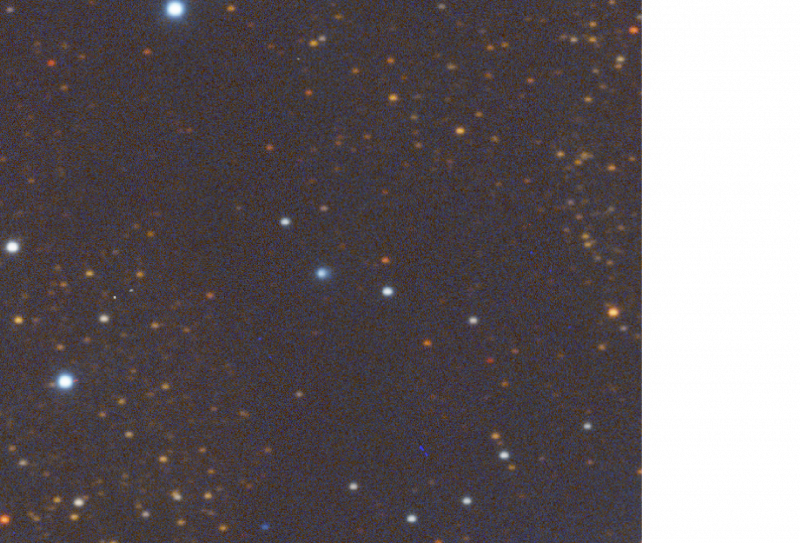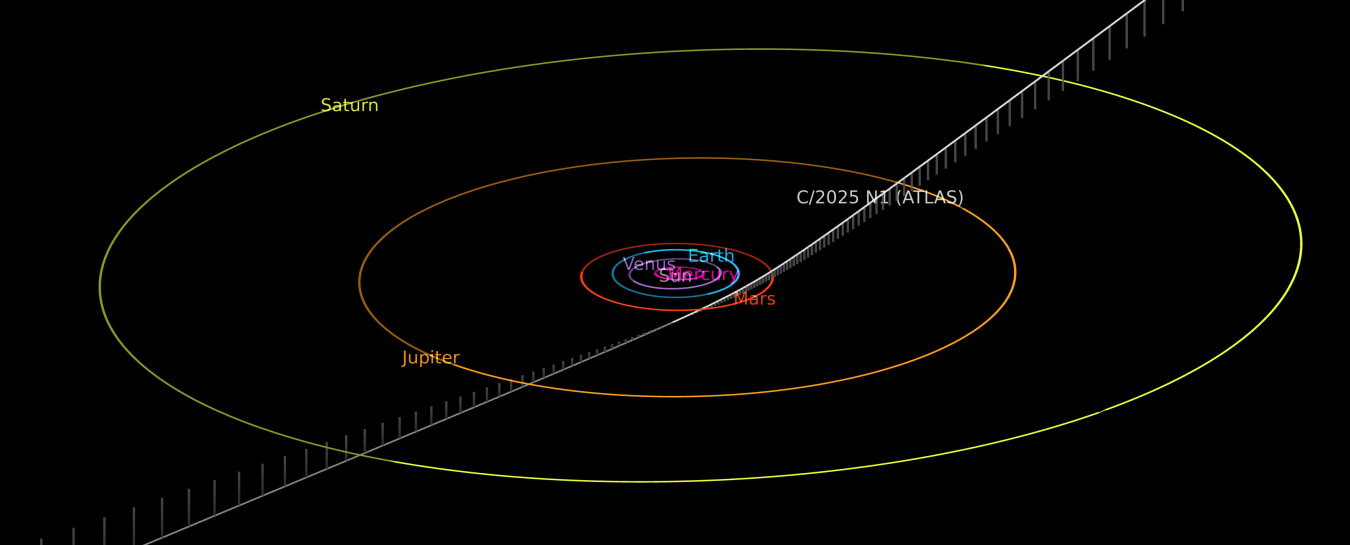Las Cumbres Observatory Aids Discovery of Interstellar Comet
A newly discovered speedy visitor from another solar system far, far, away in our galaxy has been confirmed, thanks to the rapid response telescopes of Las Cumbres Observatory (LCO). LCO is a nonprofit corporation based in Goleta, California, dedicated to advancing worldwide understanding of the universe through science with its global network of full robotic optical telescopes. The newfound object is named Comet 3I/ATLAS: “ATLAS” after the astronomical survey that discovered it and “3I” because it is the third such interstellar object to be found.
Comet 3I was first announced as a candidate Near-Earth Object on Tuesday, July 1, 2025. 3I was detected by the Asteroid Terrestrial-impact Last Alert System (ATLAS) survey, which is run by the University of Hawaii and funded by NASA. ATLAS consists of four automated 0.5-meter telescopes, two in Hawaii and one each in South Africa and Chile. The site in Chile was the first to detect and identify the new object. In the hours following the discovery, new observations came in from around the world, and these observations refined the path and strengthened the case that this was a visitor from outside our Solar System. An international team of researchers quickly wrote a paper to announce the discovery of comet 3I.

Interstellar comet 3I (ATLAS), as seen in a synthetic color composite image made with the Las Cumbres Observatory 2-meter telescope on Maui, 4 July 2025. The slightly blue diffuse cloud in the center is the comet’s coma. Image by Tim Lister / LOOK Project / Las Cumbres Observatory
The new data included several from Las Cumbres Observatory, which quickly reported observations from a 0.35-m robotic telescope in the Canary Islands. that were followed by observations from a 1-m telescope LCO operates in Chile. The Schools' Observatory, an education partner of LCO, provided data from the LCO 0.35-m telescope and 2-m Faulkes Telescope North on Maui.
“Since the new object was in the south and it’s the middle of winter there, we knew there could be trouble with weather,” says LCO Senior Staff Scientist Tim Lister, Ph.D. “Fortunately LCO has a network of robotic telescopes across the world, in both hemispheres, and so we were able to quickly get images from several telescopes in LCO’s telescope network.''
An animated movie of image data from LCO’s FTN telescope as it tracked interstellar object 3I on July 4 2025. 3I is highlighted with a green circle and the animation covers approximately 3 hours in time and the images cover a field of view in the sky of 3 arcminutes on a side. Video by Tim Lister / Joseph Chatelain / LOOK Project / Las Cumbres Observatory
“It’s been a busy time since 3I was first discovered! Seeing all of the data coming in has been really exciting” says LCO postdoctoral fellow Carrie Holt, Ph.D. “Interstellar objects are incredibly special because they offer a rare chance to study the building blocks of other planetary systems.”
Scientists estimate that comet 3I is at most 20 km (13 miles) in diameter, which is comparable to other large comets discovered in our solar system. This comet is not expected to become naked-eye bright: it will remain a telescopic object because its closest distance to the Sun will only be around the distance of Mars. It will reach the closest point to the Sun on October 29, 2025, and this will happen during solar conjunction. Solar conjunction occurs when a celestial object, such as this comet, appears to pass behind the Sun as viewed from Earth. During this period, Comet 3I will be very close to the Sun, making it difficult or impossible to observe due to the Sun's glare. Astronomers will still have several months to study the comet, learning more about the object’s composition and unravelling clues about its origin. With the study of Comet 3I scientists will gain more insights about how planets and solar systems form in our galaxy.
The new interstellar object appears similar in some ways to the two interstellar objects previously discovered: 1I/‘Oumuamu in 2017 and 2I/Borisov in 2019. All three appear to be quite dark and red, reflecting only about 5% of the sunlight that hits them, which is similar in reflectivity to asphalt. Unlike 1I/‘Oumuamu, 3I does not change much in brightness as it rotates, indicating that it is more likely to be spherical.
There are now a large number of surveys, such as ATLAS and PanSTARRS that are monitoring parts of the sky every night. Astronomers are especially excited for the upcoming Vera C. Rubin Observatory. The Rubin Observatory, which released their first look images on June 23, will be a great advance for discoveries in astronomy.
“It’ll cover the entire southern sky every three nights and go much deeper than previous surveys, which means we’ll be able to detect more interstellar objects and spot them earlier, giving us more time to study them as they approach the Sun, warm up, and potentially become active,” explains Dr. Holt. “On top of that, if one of these objects suddenly changes brightness, Rubin can alert us in real time, and then we can trigger follow-up observations with the robotic telescopes of LCO. That lets us get more detailed data and continue monitoring the comet even after the survey moves on. The fast response and flexible scheduling of LCO, plus the tools we’ve built, make it a powerful way to follow up on exciting new discoveries.”
Top image: An orbital diagram showing the path of Comet C/2025 N1 also known as 3I (ATLAS) through the solar system. The comet's path is shown in gray when it is below the plane of the planets and in bold white when it is above the plane. Diagram by NASA JPL







0 Comments
Post a Comment